Spring Landscaping for Privacy & Security: Best Plants and Design Ideas
Have you ever stepped outside on a sunny spring morning only to feel like you’re on display?
It’s a common feeling—when there’s little space between you and the next door neighbor’s yard. However, privacy doesn’t always mean isolation. Just look at the Elmbrook Historical Society on Pilgrim Road in Brookfield. Despite being nestled right next to a busy road, it feels quiet, tucked away, and peaceful, thanks in large part to thoughtful landscaping.
Many homeowners in Lake Country come to us this time of year wanting that same feeling: more privacy without sacrificing the beauty of their outdoor space.
Whether it’s noisy neighbors, busy roads, or just the need to create a more peaceful space, privacy landscaping has become one of the most rewarding ways to reclaim your yard. And the sense of accomplishment you’ll feel when you step back and see your private oasis is truly satisfying.
Spring is the ideal time to start planting. With the right mix of native trees, shrubs, and perennials, you can create a natural barrier that grows fuller each year—offering visual coverage and a sense of calm. In this guide, we’ll walk you through simple design strategies and the best plants suitable for creating a low-maintenance private outdoor space in Lake Country.
The Benefits of Landscaping for Privacy
Landscaping for privacy goes beyond blocking views—it changes how you experience your outdoor space.
Using plants instead of fences or walls creates a softer, more natural environment that feels peaceful and inviting. A well-designed privacy landscape can give you a quiet place to relax, cut down on noise from the street, and even make your property feel more spacious and secluded.
It also adds serious curb appeal. Layered plantings, seasonal color, and textured foliage create a dynamic look that enhances your home’s style and boosts its value.
Using native plants makes your yard more resilient and eco-friendly, supporting pollinators, birds, and local wildlife.
In short, it’s beauty and function – growing together.
Landscape Design Techniques for Privacy
You don’t need a huge yard or a tall hedge to create privacy—you just need a smart layout and the right plant combinations.
Here are a few go-to techniques we use when designing natural screens:
Layered Planting
Think of this as building a living wall with depth. Start with tall trees or evergreens, add mid-height shrubs, and finish with low-growing plants or ornamental grasses.
This layered approach creates a dense, visually interesting screen that feels organic—rather than boxed in.
Smart Placement
Where you plant matters just as much as what you plant.
Focus on key sightlines—between homes, along fence lines, or near patios and decks. A well-placed tree or a row of shrubs can make a huge difference in how open or protected your yard feels.
Natural Sound Barriers
Thick plantings do more than block views—they can also absorb noise.
Broadleaf evergreens, tall grasses, and dense shrubs can help muffle street sounds, neighbor chatter, or even air conditioning units. Mixing textures and plant heights helps disrupt sound while keeping things visually appealing.
Spring Planting Guide: Top Greenery for Natural Privacy
Ready to get planting?
These trees, shrubs, and supporting plants are not only beautiful—they’re perfectly suited for Wisconsin’s climate and make excellent natural privacy screens.
Imagine the beauty these plants will bring to your yard, creating a peaceful retreat that you can enjoy all year round.
Best Native Trees for Privacy Landscaping in Lake Country
Trees are the backbone of any privacy landscape. If you live in an area with a lot of deer, do your research before purchasing plantings. You don’t want to provide a winter buffet for the local herd. These varieties are known for their ability to grow quickly, provide year-round coverage, and thrive in Wisconsin conditions:
- White Pine – Soft-needled and fast-growing. Great for windbreaks and larger spaces.
- Black Hills Spruce – Compact and cold-hardy, this spruce offers a full, layered look that works well in smaller yards.
- ‘Techny’ Arborvitae – Ideal for hedging. Grows upright and thick and holds its shape beautifully.
- ‘North Pole’ Arborvitae – Tall and narrow—this is perfect for privacy in tighter areas where space is limited.
- ‘Star Power’ Juniper – Bred locally, this juniper provides dense coverage without getting too tall or wide.
Several deciduous trees, such as crabapples, serviceberry, redbud, hawthorn, and cornus mas, come with multiple stems and low branching, providing screening in the summer months.
5 Shrubs for Privacy Landscaping
Once you’ve established height, shrubs help fill in the middle layer of your design—providing texture, seasonal color, and even food for local wildlife:
- Gray Dogwood – Fills in fast and spreads into dense thickets. Bonus: it attracts birds.
- Ninebark – Bold foliage and beautiful bark. Looks great massed together for coverage.
- Red Twig Dogwood – A stunner in winter with bright red stems; thrives in tricky soils too.
- Witchhazel – A native that can tolerate shade. Unique late fall flowers provide interest up to snowfall.
- Privet – If you want a fast-growing wall, this is the plant. It can grow up to 2’+ per year. It can be tightly pruned to create a formal effect without sacrificing density, and can be kept to whatever height you prefer.
Supporting Privacy Plants: Grasses, Perennials, and Vines That Thrive in Lake Country’s Climate
Supporting plants bring your privacy design together by filling lower spaces, climbing up fences or trellises, and adding movement, color, and pollinator interest:
Native Grasses
Grasses are great for adding height, movement, and subtle structure to your landscape. These native varieties are low-maintenance and tough—perfect for borders, mixed beds, or open privacy screens:
- Big Bluestem – Tall and swaying, it adds motion and screens at heights up to 8 feet.
- Switchgrass – Low-maintenance and upright—great for wind and privacy buffers.
- Indian Grass – Warm-toned and elegant with strong vertical lines.
Tall Perennials
Tall perennials can serve as beautiful visual buffers while offering long-lasting blooms and supporting pollinators. Use them in clusters or to add vertical interest throughout your planting beds:
- Cup Plant – Broad, leafy, and bold—with cheerful yellow blooms.
- Bee Balm – A fragrant, mid-height filler that blooms for weeks.
- Iron Weed – A not-often-used native, it is a favorite for butterflies in late summer. The tall purple blooms last through September.
Vines
If you’re working with limited space or want to cover a fence, pergola, or trellis, vines are an excellent way to build vertical privacy fast. These native climbers are vigorous and attractive, making them tough enough for diverse climates:
- American Hops – Fast-growing, sun-loving, and perfect for vertical privacy.
- Sweet Autumn Clematis – A vigorous grower that provides massive amounts of tiny, sweet-smelling, creamy white flowers in late summer – fall.
Start Planting For Spring With Help from American Landscape
With the right plants and a thoughtful design, you can turn your yard into a private, peaceful retreat that feels like an extension of your home. Whether you’re looking to screen off a neighbor’s view, quiet a busy street, or simply carve out a cozy space for yourself, spring is the perfect time to get started.
At American Landscape, we specialize in creating landscapes that are not only beautiful but also functional. Our team can help you choose the right plant combinations, design layered layouts, and install everything with care—so your yard grows better with every season.
Contact us today to schedule a consultation and get expert help tailored to your space and goals.




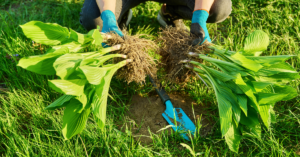
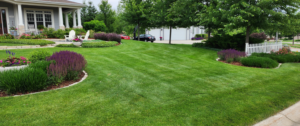
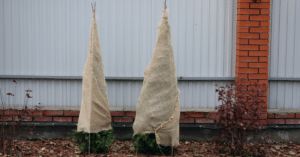 Tree & Shrub TLC: Helping Your Landscape Wake Up
Tree & Shrub TLC: Helping Your Landscape Wake Up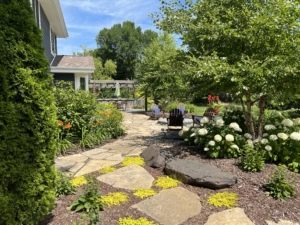
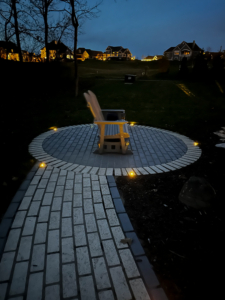
 The best small backyards are easy to care for without constant upkeep. Choosing the right plants and materials can save time while keeping your space beautiful and inviting.
The best small backyards are easy to care for without constant upkeep. Choosing the right plants and materials can save time while keeping your space beautiful and inviting.









